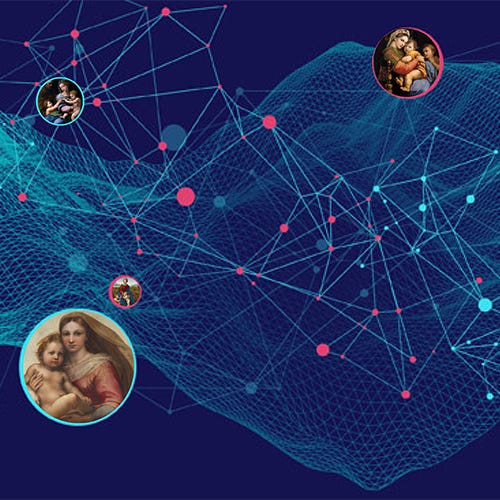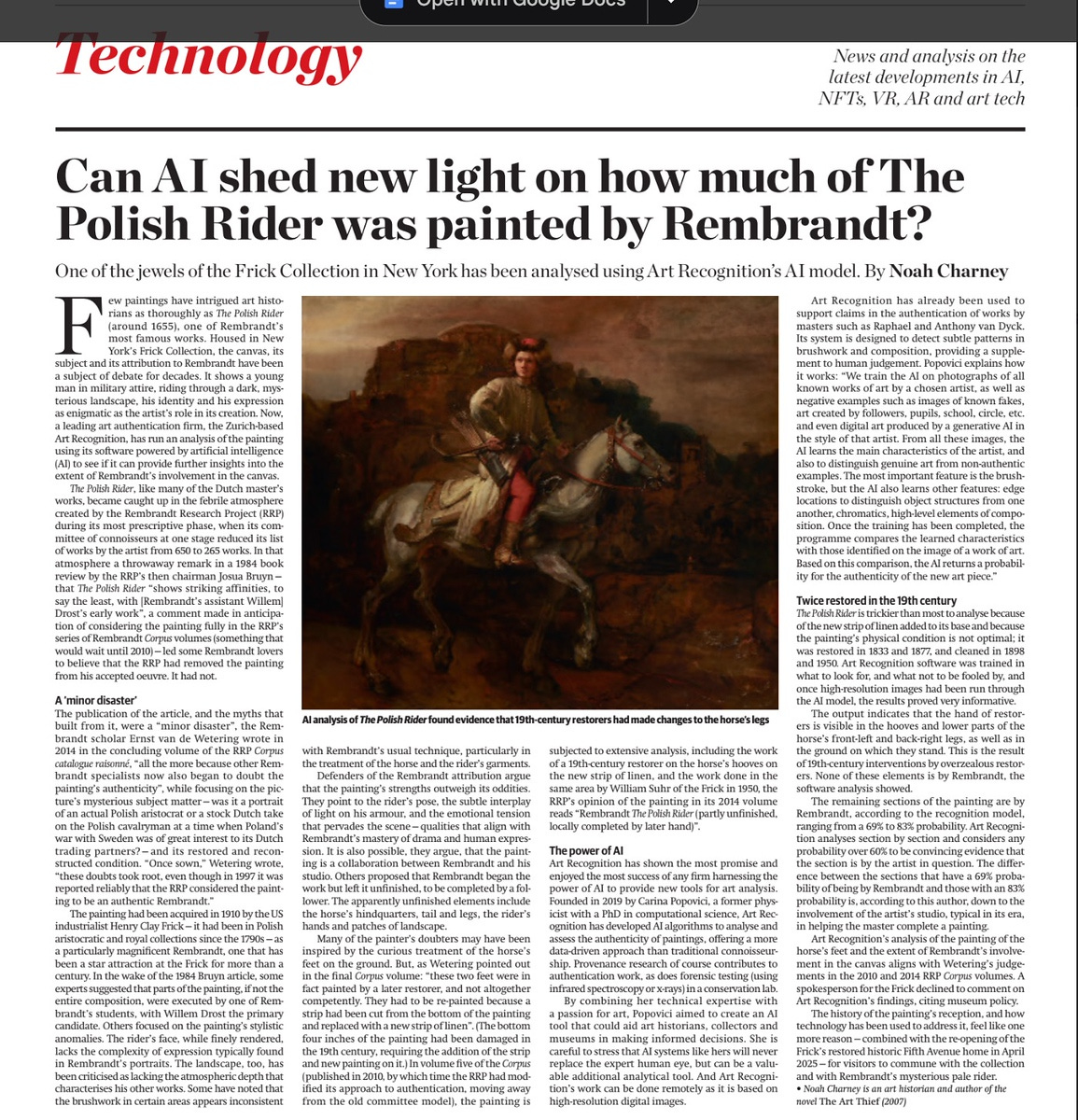AI and Art Authentication and a New "Art of Forgery"
Introducing a new project and a new edition of one of my books
I'm delighted to announce that I've joined Art Recognition as an advisor. I came across the company while researching for a pair of articles that came out this fall, one in The Art Newspaper and one in Plaster Magazine. Art Recognition (AR) is leading the way in harnessing AI to analyze authenticity and authorship, a powerful new tool that is another way for experts to solve art historical mysteries.
To read my Plaster Magazine article about art and AI, click here.
My article on AR for The Art Newspaper, the one that introduced me to the firm, is below. It came out in the December 2024 print edition of The Art Newspaper and is not online, so this is an exclusive for you, my Substack subscribers!
I’ve just been asked to write about AI and art for The Financial Times, so this is clearly a hot topic. With works surfacing that are…ahem…overtly highly questionable (I’m looking at you, supposed “Caravaggio” and supposed “Van Gogh” that have been in the news of late) we are clearly in need of new, cutting edge advanced tools to help traditional analyses of artwork to verify authorship.
New Edition of The Art of Forgery
Speaking of which, I just filed the updated manuscript for the second edition of my The Art of Forgery. This book came out as a lavishly illustrated volume with Phaidon in 2015 and it remains the go-to text on the topic, but it has been out of print. Never fear, a new, much updated edition will be published at the end of this year by Bloomsbury. I’ve updated what needed updating and expanded it from 60,000 words to 110,000 words, including a robust new chapter on “Digital Power,” looking at digital technologies that weren’t really a thing when the first edition was written, particularly NFTs, blockchain, generative art, metaverses, and Artificial Intelligence as a tool of daily use. The above case studies will indeed feature. I’m also planning to launch a new podcast dedicated to the topic of art authentication, so stay tuned.
Lectures for the Spring
Some of you may have been among the 500 people attending my last online lecture for The Smithsonian, on The Ghent Altarpiece, which was held January 29. Well, technically Jan 30 my time—so it is at a normal hour in the US, it starts at 1230am my time (Euro central), so such lectures are conducted in my pajamas and they finish around 2am my time. Anything for the arts!
This was the first in a series of four lectures I’ll be giving for The Smithsonian this spring, followed by a full online course in the fall. You can sign up for the other lectures, and you even get credit for them towards the Smithsonian’s World Art History Certificate.
Here are the next two lectures. The one in March I’ll be giving with Carina Popovici, founder of Art Recognition, the firm I mentioned joining as an advisor.
AI and Art Authentication: The Future of Forensics - March 27
Artificial intelligence is transforming the world of art authentication. Art historian Noah Charney and Carina Popovici, co-founder of Art Recognition, an AI-driven art verification company in Switzerland, examine how machine learning is revolutionizing the process of determining artwork authenticity.
They reveal how AI analyzes brushstrokes, patterns, and pigments with precision beyond human capability, offering groundbreaking solutions to combat art forgery and identify authorship. Charney and Popovici share images from Art Recognition projects as they discuss investigations into works thought to be by Raphael, Van Dyck, Rembrandt, and Leonardo da Vinci.
The Caravaggio Case: An Art History Whodunnit - April 10
Caravaggio's Saint Matthew cycle—three paintings commissioned circa 1599 for the Contarelli Chapel in the Roman church of San Luigi dei Francesi—was the artist’s first major public work. Like many other of his paintings, these artworks come with a backstory that references other artists, including Raphael. And in this case, a mystery or two.
The series focuses on major characters in Saint Matthew’s story, but there are conflicting theories of exactly who is represented and who might be missing. For example, in The Calling of Saint Matthew, which figure depicts the saint? How can we spot the killer in The Martyrdom of Saint Matthew among the red-herring suspects Caravaggio has planted to mislead viewers? Art historian, art crime expert, and author Noah Charney deciphers a Baroque detective story centered on a complicated artist (with a murder in his history) that offers a novel way to approach and appreciate the genius behind the paintings.
More goodies to come, including the publishing of my next book and a very exciting new book contract… See you next month!



